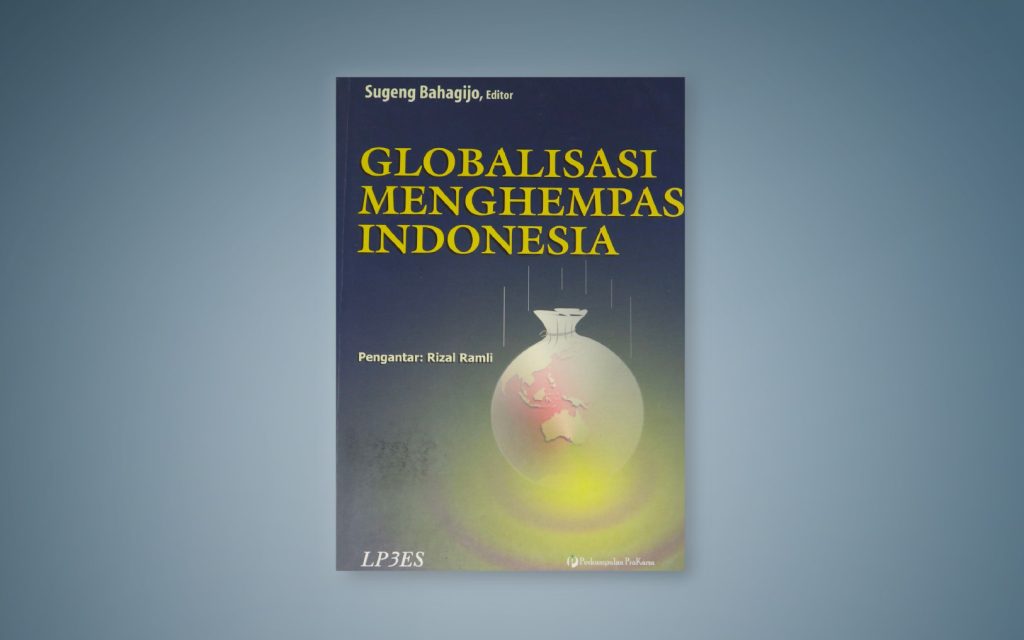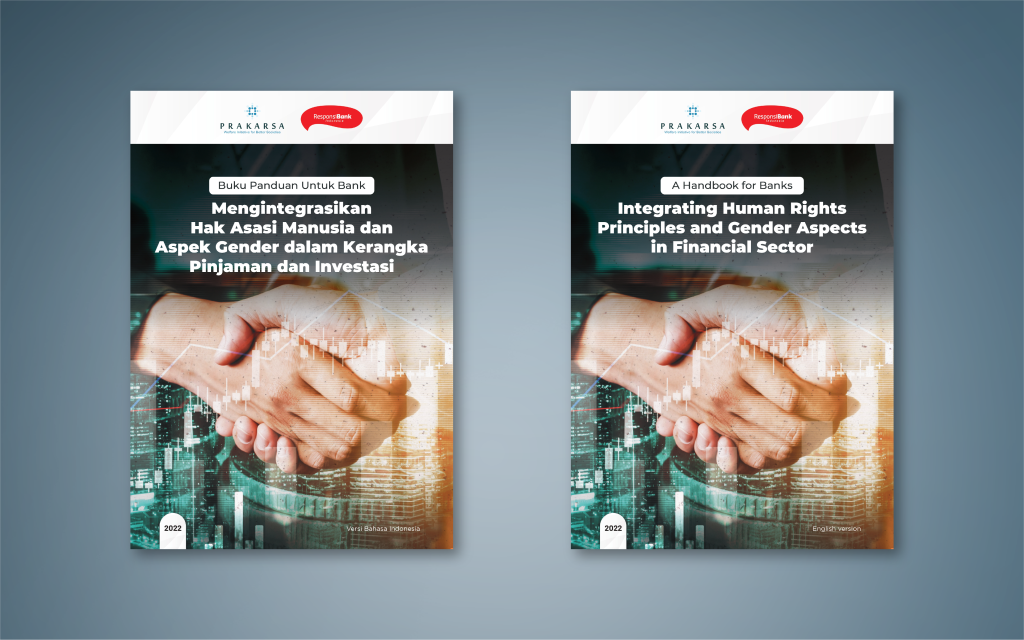
Sugeng Bahagijo, editor
Introduction : Rizal Ramli
Publisher ; PT. LP3ES Libraries and Associations Prakarsa
ISBN: 979-3330-60-0
xviii + 381 pages; 15,5×23 cm.
First Printing, December 2006
Introduction
Indonesia's Bad Experience Under IMF
By: Rizal Ramli
Former Coordinating Minister for Economic Affairs
and the Minister of Finance of the United Republic of Indonesia Cabinet
When Indonesia decides to join the program International Monetary Fund (IMF) In October 1997, I wrote an article that was widely quoted in the mass media at that time that inviting the IMF would actually plunge Indonesia into a deeper crisis. At that time, which was repeated in the plenary session "Exit Policy" At the 16th Congress of the Indonesian Economic Scholars Association (ISEI), in Batu-Malang in mid-July 2003, I assumed that the IMF was not a “God of Help” but a “God of Amputations” for the Indonesian economy.
In addition to failing to cure the disease, the doctor who was asked for help also carried out unnecessary amputations and charged the patient with failure costs. The International Monetary Fund has given the wrong “medicine”, thus making the Indonesian economy really slumped.
However, my concerns were completely ignored, even a number of senior technocrats and economists at that time (October 1997) including Widjojo Nitisastro, continued to give advice and suggestions to President Soeharto to immediately ask for IMF assistance. My prediction proved that the IMF's involvement actually made the economic crisis in Indonesia worse and deeper. Due to misdiagnosis and wrong medication, Indonesia's economic growth in 1997 was minus 13 percent. Without the involvement of the IMF, the economic crisis will indeed continue to occur in Indonesia, but on a relatively smaller scale (economic growth between minus 2% to 0%) in 1998. However, the involvement of the IMF caused the Indonesian economy to plummet tremendously, -12,8% in 1998 The socio-economic cost of the crisis was the May 1998 social unrest (IMF-provoked riots), the increase of tens of millions of unemployed, the bankruptcy of the national and private economies, the cost of bank recapitalization of more than Rp. 600 trillion and the additional debt burden of tens of billions of dollars which is still felt today.
The IMF's wrong remedy in Indonesia can be seen from the three stages of policy since October 1997. In the first phase, the policies suggested by the IMF to carry out financial stabilization actually created financial de-stabilization and bankruptcy. This instability was mainly triggered by the super tight monetary policy (tight money policy). The interbank interest rate skyrocketed from 20% to 300% in the third quarter of 1997, the worst in the history of the Indonesian economy . This monetary policy creates liquidity crunchin Indonesian banking, as many banks rely on some of their liquidity from the interbank money market. The mistake was continued by the IMF with the liquidation of 16 banks without proper preparation in November 1997. As a result, public confidence in domestic banking collapsed and immediately triggered capital outflows about 5 billion US dollars. This made the value of the rupiah, which had weakened, plummeted again. The uncontrollable depreciation of the rupiah was made possible after several months earlier (14 August 1997) the rupiah exchange rate was floated (free float). Floating actually triggerscapital outflows which pushed the rupiah exchange rate to weaken. As a result, the business world received a double hit from the depreciation of the rupiah and the supere high interest rates. Companies experienced liquidity difficulties followed by mass bankruptcies and tens of millions of layoffs.
The next stage is the transformation or transfer of private debt into public debt. The IMF's suggestions have made and created the debt of the Government of the Republic of Indonesia to increase enormously, especially domestic debt, which before being handled by the IMF was zero. Prior to the 1997 crisis, Indonesia's total debt reached US$136 billion, consisting of US$54 billion in government debt and US$82 billion in private debt. But in 2001, after going through the recapitulation program and various sales junk bonds, Indonesia's foreign debt increased to US$ 74 billion plus domestic debt of Rp. 647 trillion (approximately 65 billion US dollars) while private debt after the crisis was reduced to US$ 67 billion due to accelerated payments and restructuring. Currently, Indonesia's total debt has exceeded Indonesia's GDP, which is only around US$ 150 billion. As a result of the financial crisis and IMF medication errors, Indonesia's debt doubled during the four years of the crisis.
In the third stage, various effects of the IMF's medication errors began to have an impact on the State Revenue and Expenditure Budget (APBN). For 2005 alone, according to the plan for paying debts in the APBN, it will reach around 13 billion US dollars (around Rp. 160 trillion), both for payment of foreign debt and domestic debt. The budget for debt repayment is equivalent to three times the salaries of all civil servants and the Indonesian National Armed Forces (TNI), or more than eight times the budget for education. With the enormous burden of the state budget, the Indonesian government is faced with a very difficult choice. In order to reduce the deficit, various policies were forced to be taken which were very burdensome to the public. In addition to raising taxes, basic electricity tariffs, and fuel prices, the government is also under pressure to quickly sell the assets of the National Bank Restructuring Agency (IBRA) and State-Owned Enterprises (BUMN) at low prices. The BCA case is an interesting example. With a sales price target of around 5 trillion rupiah, the APBN will still bear the interest expense of BCA's recapitalization of between 7-8 trillion rupiah from year to year if the recapitalization bonds are not withdrawn.
In short, the policies of the New Order Economist Mafia supported by the IMF by relying on debt rather than investment in development have trapped the Indonesian economy into a debt trap (debt trap) deeper. As a result of the IMF's wrong prescriptions and being imposed on Indonesia, the state took over the burden that should have been borne by the private sector due to the Bank Indonesia Liquidity Assistance (BLBI) policy which reached 144 trillion Rupiah as well as banking recapitalization. In fact, the BLBI case was recorded as the biggest financial scandal in Indonesia's economic history. International Monetary Fund himself in his internal report in early 1999, admitted that he had made a number of mistakes in dealing with the 1997-1998 Asian financial crisis, so that a number of countries, including Indonesia, had to undergo a strict program. Unfortunately, even though the patient was already in a coma, the doctor still pretended not to know and even avoided his professional responsibilities. Whereas in the medical world, patients who take the wrong medication have the right to ask for financial compensation from doctors who commit malpractice.
However, some circles continue to breathe myths to maintain Indonesia's dependence on the IMF. As a result of being entangled in a prolonged crisis, like it or not, the Indonesian economy depends on the IMF. The first myth is that the IMF will attract and increase investor confidence in Indonesia, however after a dozen times letter of intent(LoI) and eight years under IMF supervision, including Post Program Monitoring, The level of investor confidence in Indonesia has not yet recovered. The main obstacle to investment lies not in the presence or absence of the IMF, but rather in political instability, the absence of law enforcement and tax procedures, and a complicated network of bureaucracy. If these things are fulfilled and addressed, investor confidence will certainly increase without the need to involve the IMF.
The second myth is that the debt owed to the IMF will soon be followed by an inflow of private capital into Indonesia. However, what happened was the opposite. Since the past eight years has happened decoupling between multilateral capital flows and private capital flows to Indonesia: the more the IMF owes, the less capital comes in. The third myth is that the IMF will be able to stabilize the rupiah exchange rate. Over the past eight years, this myth has really become a joke because the rupiah remains volatile mainly due to changes in external factors and the dynamics of domestic politics. On the contrary, since October 1997, every time the IMF team came to Jakarta, the value of the rupiah continued to decline. In every such opportunity, Bank Indonesia was forced to intervene tens of millions of US dollars to strengthen the rupiah and/or raise interest rates.
These myths are constantly being developed so that the Indonesian people are fooled that without the IMF Indonesia will go bankrupt and fall apart. Meanwhile, other countries, such as Malaysia for example, were able to overcome and get out of the crisis without the need to owe the IMF. Ten IMF debtor countries, including Russia, Brazil and Argentina, have been able to pay off their debts to the IMF all at once since last year. These countries have proven not to fall apart and can even rise more quickly. As a result of the accelerated repayment of these countries' debts, the IMF's debt portfolio reached its lowest point since the 1980s, only at US$ 35 billion, so that this international financial institution is estimated to suffer a loss of US$ 600 million and be forced to reduce its number of employees.
Since 2002, a number of friends and I have consistently called for the debt to the IMF to be paid immediately. It is necessary to accelerate the payment of this debt because the debt to the IMF only functions as an additional foreign exchange reserve and cannot be used for development at all. Interest on the remaining IMF debt of 7,51 billion US dollars is 4,3 percent. The interest rate on this debt is equivalent to US$323 million/year or 8,3 billion Rupiah per day. This amount of money can be used to feed around 1 million Indonesians twice a day in the form of rice and simple side dishes purchased from a Tegal stall (8.300 rupiah).
The fact that the IMF often misdiagnoses and therefore needs to be reformed has been raised by many parties. The United States Congress, for example, urged the establishment of a special commission led by Professor Alan Meltzer of Carnegie Melon University. In addition to evaluating the performance of the IMF, the commission also made very sharp criticisms and recommended that the IMF be reformed. This is not surprising because apart from providing advice in the monetary sector that is oriented towards tight fiscal policy, the IMF also always recommends to debtor countries to carry out "indecent" privatizations, liberalize trade in the financial sector, and deregulate various policies. To promote these recommendations, the IMF is always supported by the World Bank and the World Trade Organization (WTO) with various projects, requirements and regulations.
This book underscores the importance of reforming the IMF and other international financial institutions so that the policies and programs that are born do not unilaterally strengthen the position of rich countries that allow rich countries to exploit poor and developing countries. This book not only describes in detail the impact of deregulation, privatization and liberalization, but also examines how these ideas flourished both in international financial institutions and among the Indonesian elite.
This book shows that there is a very close relationship between decision-making in international financial institutions and the policies they recommend to developing countries. There is a big problem with governance (governance) The Multilateral Institutions: The reality is that there is a huge disparity between rich and developing countries, which makes the policies and programs that are decided to always benefit the rich countries.
The significance of this book is to explain to the public the mysteries of privatization, trade liberalization and deregulation of the financial sector. This book attempts to answer questions about: (a) Is it true that the privatization of water and electricity benefits citizens? Who actually decides the policy? Based on what considerations? (b) Why is Indonesia flooded with imported sugar and rice? Who actually decides the policy? (c) Why are health services and educational facilities increasingly expensive and poor? Where is the export proceeds and taxes of the Indonesian people used? Who made that decision?
The method of writing this book, which combines documentation of experiences and reflections among non-governmental organizations (NGOs) as well as individuals working in government and survey results, makes the data analysis and recommendations of this book difficult to refute.
Congratulations to the Association Prakarsa who succeeded in dissecting the governance issues of international financial institutions that so far have not been widely known by the public.



